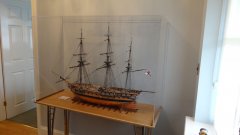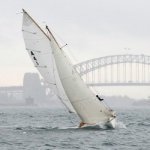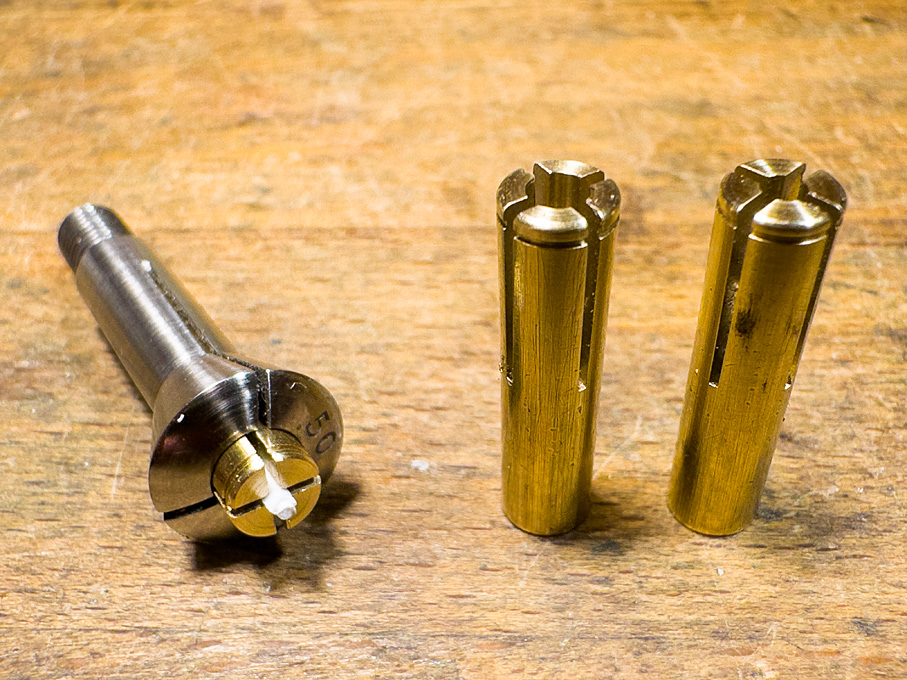-
Posts
6,603 -
Joined
-
Last visited
About wefalck
- Birthday 05/01/1956
Contact Methods
-
Website URL
http://www.maritima-et-mechanika.org
Profile Information
-
Gender
Male
-
Location
Paris, France
-
Interests
19th shipbuilding and naval history, indigeneous boats and their history
Recent Profile Visitors
-
 Canute reacted to a post in a topic:
Is molto wood filler by AkzoNobel any good?
Canute reacted to a post in a topic:
Is molto wood filler by AkzoNobel any good?
-
 wefalck reacted to a post in a topic:
Work area pictures only
wefalck reacted to a post in a topic:
Work area pictures only
-
 wefalck reacted to a post in a topic:
USS Cape (MSI-2) by Dr PR - 1:48 - Inshore Minesweeper
wefalck reacted to a post in a topic:
USS Cape (MSI-2) by Dr PR - 1:48 - Inshore Minesweeper
-
 wefalck reacted to a post in a topic:
USS Cape (MSI-2) by Dr PR - 1:48 - Inshore Minesweeper
wefalck reacted to a post in a topic:
USS Cape (MSI-2) by Dr PR - 1:48 - Inshore Minesweeper
-
 thibaultron reacted to a post in a topic:
Billy 1938 by Keith Black - 1:120 Scale - Homemade Sternwheeler
thibaultron reacted to a post in a topic:
Billy 1938 by Keith Black - 1:120 Scale - Homemade Sternwheeler
-
 cotrecerf reacted to a post in a topic:
Pomeranian Rahschlup 1846 by wefalck – 1/160 scale – single-masted Baltic trading vessel
cotrecerf reacted to a post in a topic:
Pomeranian Rahschlup 1846 by wefalck – 1/160 scale – single-masted Baltic trading vessel
-
 Canute reacted to a post in a topic:
Billy 1938 by Keith Black - 1:120 Scale - Homemade Sternwheeler
Canute reacted to a post in a topic:
Billy 1938 by Keith Black - 1:120 Scale - Homemade Sternwheeler
-
 wefalck reacted to a post in a topic:
Billy 1938 by Keith Black - 1:120 Scale - Homemade Sternwheeler
wefalck reacted to a post in a topic:
Billy 1938 by Keith Black - 1:120 Scale - Homemade Sternwheeler
-
 wefalck reacted to a post in a topic:
Pomeranian Rahschlup 1846 by wefalck – 1/160 scale – single-masted Baltic trading vessel
wefalck reacted to a post in a topic:
Pomeranian Rahschlup 1846 by wefalck – 1/160 scale – single-masted Baltic trading vessel
-
 wefalck reacted to a post in a topic:
Pomeranian Rahschlup 1846 by wefalck – 1/160 scale – single-masted Baltic trading vessel
wefalck reacted to a post in a topic:
Pomeranian Rahschlup 1846 by wefalck – 1/160 scale – single-masted Baltic trading vessel
-
 wefalck reacted to a post in a topic:
Pomeranian Rahschlup 1846 by wefalck – 1/160 scale – single-masted Baltic trading vessel
wefalck reacted to a post in a topic:
Pomeranian Rahschlup 1846 by wefalck – 1/160 scale – single-masted Baltic trading vessel
-
 wefalck reacted to a post in a topic:
Pomeranian Rahschlup 1846 by wefalck – 1/160 scale – single-masted Baltic trading vessel
wefalck reacted to a post in a topic:
Pomeranian Rahschlup 1846 by wefalck – 1/160 scale – single-masted Baltic trading vessel
-
A nice project and for European eyes rather exotic (though we know that style from 'Western' films, of course). Pure wood structures are quite rare in Europe, except for log-cabins in certain mountain and nordic areas. Somehow it would have been more sensible to design the shop as an insert with three walls that is slipped into the basic structure, once kitted out, from underneath or above.
-
Mikro Kristal Clear is an acrylic gel, I believe. It has been formulated originally for railway modellers and has been used by them to e.g. glaze locomotive windows for decades ... it's always useful to look out in other domains of modelling for useful materials and tools. Another option for glazing is the special UV-curing cement that is used for acrylic glass. It's kind of liquid acrylic glass and can also be polished like it.
-
wefalck started following Simple, low cost, small thimbles and Is molto wood filler by AkzoNobel any good?
-
I had a quick look at the technical note on their Web-site and according to this it is basically PVA filled with ground-up calcite and talcum (the latter presumably improves the 'flow' when working it). So there shouldn't be a problem when painting over it with acrylics unless you really soak it in paint - one should apply in thin layers anyway. I am surprised to hear about problems with Clou wood putty. I have used their products for decades and for me they are among the best on the market. A glitch could be that under pressure from the ecologists, they gradually move away from organic solvent-base formulations to acrylics-based formulations. In the case of putties this should not really be a problem - another case are the sanding fillers, that do not penetrate as well as the original ones. I would suspect that the putty was applied in a too thick layer and had not fully cured before being painted over.
-

Simple, low cost, small thimbles
wefalck replied to georgeband's topic in Masting, rigging and sails
I actually use what the watchmakers call a jewell-setting tool, for which I turn anvils and punches as needed. It has a micrometer stop so that I can set the exact distance between the anvil and punch in order to not squash the thimble. -

Simple, low cost, small thimbles
wefalck replied to georgeband's topic in Masting, rigging and sails
I am giving in to the temptation to divert this thread with another method that I have used occasionally: cored solder-wire. Push a wire into the core to avoid distorting the solder-wire while cutting sliced off. The rosin core can be washed out with a solvent. Flare one end slightly, make your eye and then flare the other side. Finally, both side can slightly peened over the rope. Core solder-wire is sold down to 0.5 mm diameter, I think. For a more sophisticated approach, you can also consult @archjofo's building log on his CREOLE. -
Me too, I love those frilly ventilation grilles 👍🏻 I have been following on/off that YouTube channel on rebuilding and fitting out the TALLY HO, that probybly most of you are aware of, and recalling how they were struggling to get all the furniture etc. to fit makes you appreciate how difficult this is in a model ...
-
This is what I tried to imply with my previous post. However, in the case of cogs, which was the subject of the original post, the scope is narrowed largely to northern Europe, so cogs indeed seem to have ventured into the Mediterranean (e.g. in the context of transporting Crusaders). Geologists have deconvoluted (or at least tried to) the different ice-flows during the different glaciations, so that we roughly know where around the northern European coast which kind of boulders from which origin can be found. If I now find in a wreck boulders of different rock species, I can to some degree locate the areas where the crew had picked up these boulders or in other words the 'ports of call' - this is assuming that no transfer of ballast has occurred between ships. There has been also for centuries, if not millenia, an extensive trade in stones of particular properties. For instance, mill and grindstones from sandstone deposits on Bornholm or the Rhineland can be found all over Europe. The rough-cut stones may have been transported as ballast or finished products partially replaced ballast in ships loaded with other products. Mapping such trade-routes is a specialised field in archaeology and history, drawing on geological, petrographic and mineralogical expertise.
-
In fact, some of the boulders that may have been used as ballast can be traced by geologists without any scientific instruments to very specific locations in Scandinavia. However, this does not mean that they have been picked up there, because these boulders have been transported by the glaciers during the various ice-ages over hundreds or thousands of kilometers to what are now the southern shores of the Baltic. With the aid of trace-element analysis today, geologists (and criminologists) can now trace many rocks to very precise locations around the world. In this way we don't necessarily know the origin of a wreck, but we know, where it has loaded ballast.
-
Hopefully not too many, Pat ! ****************************** Another small toolmaking digression One of the great advantages of watchmaker’s lathes is the multitude of work-holding options/spindle tooling. There are collets and chucks of many different sizes and types. One type, however, never seems to have been made and this is collets with square holes. In a way it is understandable, as making exactly centric square holes with the technology available 50+ years ago, would have been quite a challenge and expensive. Today with EDM that would not be a problem anymore. It seems that watchmakers actually had little need for them and when they needed to chuck up a winding stem at the square end, they would have used a so-called 8-screw chuck, which however, is worse to set up than a four-jaw independent chuck. I expect to have to work at the ends of some square section materials soon. While I have also a centric four-jaw chuck for the lathe, it does not fit onto micro-mill and for parts of less than 2 mm edge length it is not very precise. Working on such small parts in a chuck does not feel very safe either. Therefore, I decided to finally implement and idea that I have been tossing about for years: square insert collets. A standard fitting for watchmaker’s lathes is a set of brass insert collets that are used to hold delicate objects, such as small screws by their threads. They fit into a 5.0 mm collet and have three slots to ensure concentricity. The idea was to make collets with two cross-wise slots (like the cheapo brass collets you can buy for handheld drills) and a bore in the centre. By combining an appropriate slot width with an appropriate bore, you can make square stock fit diagonally into the collet and centre it exactly. I worked out the geometry needed for 1 mm, 1.5 mm and 2 mm square stock/parts respectively. The other dimensions were taken from the existing insert collets, i.e. the diameter of 5 mm and the length of 20 mm. Blanks were turned up from some quality old brass rod, bored from the back with 2.5 mm and threaded M3 for depth stops to made at some later stage, if needed. The blanks then were turned around and drilled 1.1, 1.7 and 2.4 mm respectively for the three collet sizes. A shallow groove turned in facilitates the extraction from the main collet. The parts then were transferred to the mill and set up in a vice with a square collet block for slotting exactly across the centre. They were all slotted 0.5 mm. A test turn with a 1 mm square polystyrene rod shows that this works very well. Size 1 mm, 1.5 mm and 2 mm square insert collets for 5 mm watchmaker’s lathe collet. Back to the Rahschlup now.
About us
Modelshipworld - Advancing Ship Modeling through Research
SSL Secured
Your security is important for us so this Website is SSL-Secured
NRG Mailing Address
Nautical Research Guild
237 South Lincoln Street
Westmont IL, 60559-1917
Model Ship World ® and the MSW logo are Registered Trademarks, and belong to the Nautical Research Guild (United States Patent and Trademark Office: No. 6,929,264 & No. 6,929,274, registered Dec. 20, 2022)
Helpful Links
About the NRG
If you enjoy building ship models that are historically accurate as well as beautiful, then The Nautical Research Guild (NRG) is just right for you.
The Guild is a non-profit educational organization whose mission is to “Advance Ship Modeling Through Research”. We provide support to our members in their efforts to raise the quality of their model ships.
The Nautical Research Guild has published our world-renowned quarterly magazine, The Nautical Research Journal, since 1955. The pages of the Journal are full of articles by accomplished ship modelers who show you how they create those exquisite details on their models, and by maritime historians who show you the correct details to build. The Journal is available in both print and digital editions. Go to the NRG web site (www.thenrg.org) to download a complimentary digital copy of the Journal. The NRG also publishes plan sets, books and compilations of back issues of the Journal and the former Ships in Scale and Model Ship Builder magazines.

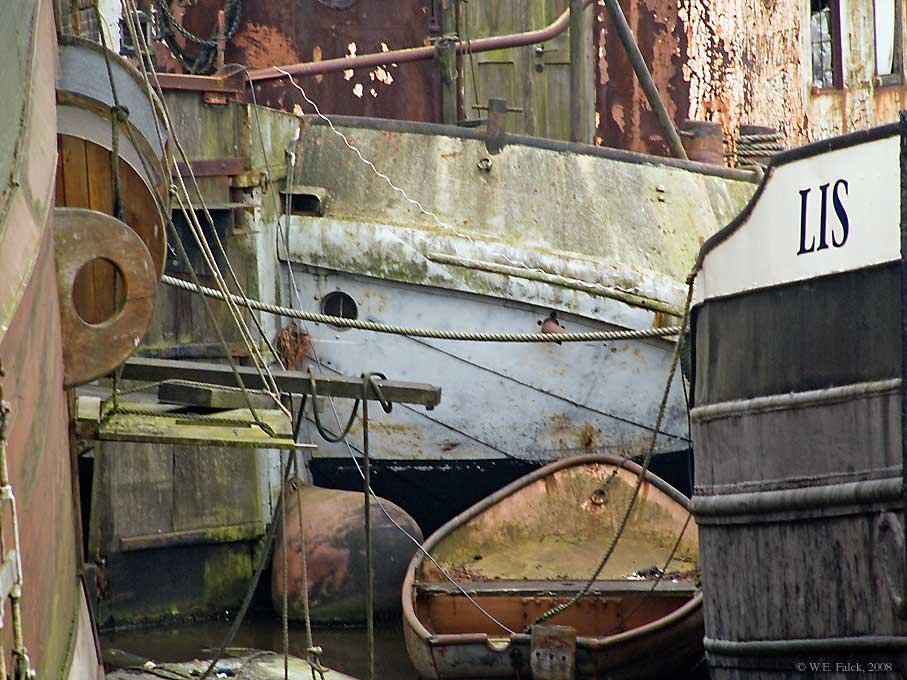
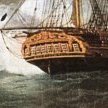


.thumb.jpeg.fc5d633a7b34428fcf19419a73d56d55.jpeg)



